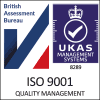Course Overview
Download Course FactsheetUE Systems | Level 1 / CAT 1 Ultrasound Training
Location: Rotherham, Kirkcaldy
Assessment: Course delegates must pass a written exam with a score of 80% or higher
Course Duration: 5 Days
Certificate Gained: UE Systems Category 1 Certification
Entry Requirements: Knowledge in Airborne/Structure Borne Ultrasound Inspection
Hearing acuity – Must meet the minimum requirement of one ear of less than 25 dBHL (with or without aid.)
Course Material Requirements: Laptop computers with Software downloaded from www.uesystems.eu (FREE) and bringing your own Ultraprobe is highly recommended, along with Steel Toed Safety Shoes and Ultraprobe that will be used.
Book your place onto the Category 1 course today by filling in our online booking form to the right, or by calling the team directly.
Course Details
About the Category 1 Ultrasound Course
Conforming to the classroom requirement of ASNT Recommended Practice, SNT-TC-1A, and ISO 18436-8 the course offers 32 hours of instruction with a written examination. This is a comprehensive classroom course in which the theory, principles and practices of Airborne/Structure Borne Ultrasound Technology are taught. Instructors for this course have been selected for their outstanding comprehension, experience and technical expertise in the field of Airborne/Structure Borne Ultrasound. The course was designed by a committee of experts, some of whom were responsible for pioneering and developing the technology.
What’s Covered in the Course?
The following subjects are covered as part of this course:
Day 1: Introduction and Basics:
- Certification requirements for Category I
- Review of Proactive and Predictive Maintenance Concepts
- Typical Applications Overview
- Theory Of Sound & Basic Physics of Ultrasound
- Technology Integration
- Equipment/Instrument/Software Overview
- Generalized Methods of Recording and Reporting Inspection Results
- Beginning of basic software integration
Day 2: Leak Detection:
- Concepts of Leak Detection: Fluids Defined, Leak Rates, Acoustic Properties Leaks, Types of Leaks
- Leak Detection Methods: Pressure, Vacuum, Ultrasonic Tone Test
- Gross-to-Fine Method
- Leak Confirmation Methods
- Working in Noisy Environments, Shielding Techniques
- Inspecting Heat Exchangers
- Conducting a Compressed Air Leak Survey: determining CFM loss computing energy savings, carbon footprint reduction, recording and reporting survey results
- Software Download, Reporting
- Hands in Field Work
- Quiz
Day 3: Electrical Inspection:
- Safety Considerations,
- Overview of Types of Electrical Equipment
- Definition of Electrical Discharges and Sound Recognition
- Diagnosing Electrical Discharges with Frequency Analysis and Time Wave Form
- Acoustic Effects Versus Heat Generated Defects,
- Integration of Ultrasound and Infrared Methods,
- Detection Methods for Electrical Equipment,
- Confirmation and Reporting Methods
- Hands-on In Field Work
- Quiz
- Valves and Steam Trap Contact Approach
Day 4: Mechanical Inspection:
- Strategies of Mechanical Inspection,
- Repeat ability and Reliability,
- Bearing Inspection and Failure Modes of Bearings,
- Bearing Trouble Shooting Methods and Sound Recognition,
- High Speed versus Slow Speed,
- Bearing Comparison Methods,
- Bearing Trending Method with Decibel and Level of Failures
- Data Logging, Data Management,
- Sound Recording
- Basic Fault Frequency Analysis with UE Spectralyzer
- Reporting
- Conditioned Based Lubrication with Ultrasound
- Over Lubrication/Under Lubrication
- Sound Recognition
- Gears, Pumps, and Cavitation,
- Hands-on In Field
- Quiz
Day 5: (1/2 Day)
- Review of Airborne Ultrasound Technology
- Final Examination (2 hrs. 100 Questions)
Course Suitability
What Assessments Are There?
In order to achieve an official certification, classroom training meeting the requirements of SNT-TC-1A must be completed along with successfully passing the General, Specific and Practical Quizzes, and Exam with a score of 80% or higher.
Certification Gained
UE Systems Category 1 Certification
On-Going Requirements
Documentation of education or experience must be maintained annually. Hearing acuity must meet the minimum requirement of one ear of less than 25 dBHL (with or without aid.) Hearing acuity examinations must be documented annually. Documented experience signed by a supervisor or superior for 3 months or 210 hours.
Essential Readings
Course Materials
- Bringing your own Ultraprobe is highly recommended but not essential
- Steel Toed Safety Shoes
- Laptop computers with Software downloaded (Free) from here








